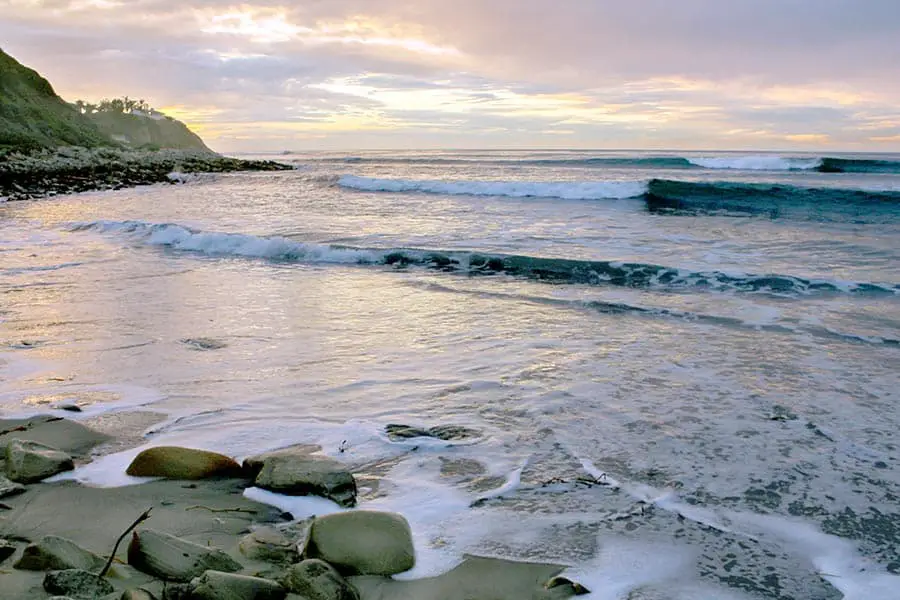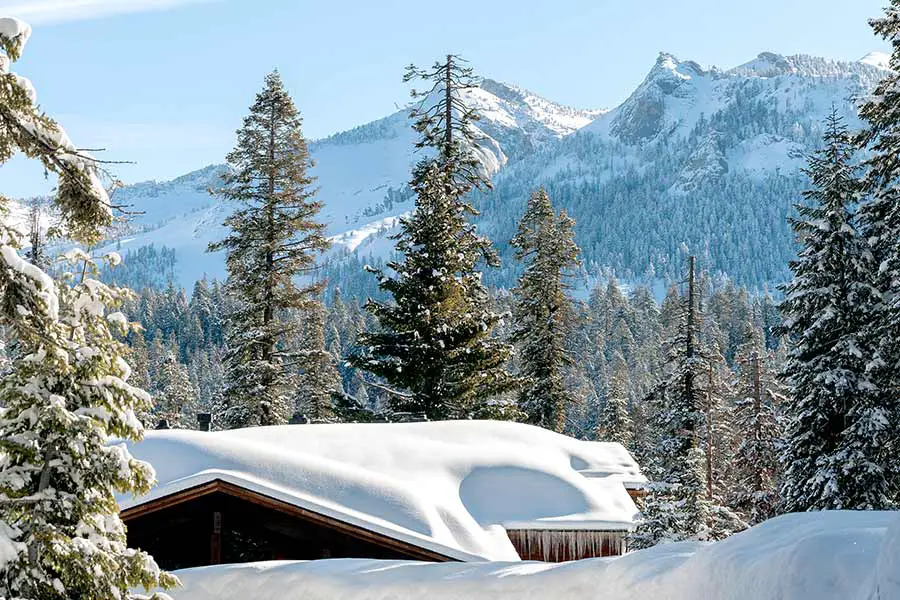
California is often viewed as the summer vacation destination with palm trees, stunning beaches, and warm temperatures. However, California can be great in the winter as well. Depending on where you plan to visit, the climate can vary drastically. So, what is winter like in California?
Winter in California typically comes with mild or cool temperatures and increased rainfall across most of the state. However, due to the state’s many microclimates, visitors can easily find just about any type of winter weather in California, including snow.
If you are planning a trip to California during the winter, you want to do your research ahead of time. Where you choose to visit can impact what clothes you decide to wear, what type of vehicle you should rent, and what activities are available. Continue reading for more information on California’s many climates and why California is one of the top winter destinations in the United States.
Winter in California – What You Can Expect
California is a vast state that stretches nearly 800 miles from north to south. It’s home to numerous different landscapes from towering mountains, coastal plains, agricultural valleys, and deserts.
In fact, most climatologists agree that there are 14 distinct climate zones in California. The temperatures, climates, and weather in these areas can vary greatly. Therefore, to better understand California winters, it’s easier to explore the various major regions.
Coastal California
The most notable part of California is the incredible coastline. You’ll find major cities along the coast, including San Francisco, Los Angeles, and San Diego. Along California coasts, the temperatures during the winter can range from 40 to 60 degrees. These temperatures tend to be on the warmer side, the closer you get to the Mexican border.

Although there is still plenty of opportunity for sunshine, December through April are the rainy season. The northern California coast tends to get more rainy days.
For example, San Francisco sees an average of 10 rainy days during January compared to 6 rainy days for Los Angeles. Rain typically arrives in spurts that last several days at a time. Days leading up to and following rain can be overcast, but fog is less common in the winter (since fog occurs when cold ocean water mixes with warmer spring or summer air).
Mountains
California has nearly 8,000 named mountain peaks spread across dozens of mountain ranges. The most prominent mountain range is the Sierra Nevadas which stretches up the eastern border of the state.

Temperatures are much lower at higher elevations bringing significantly colder temperatures than in other regions. It is possible to see warm spells that get up to 60 degrees, and temperatures often dip to 10 to 20 degrees.
Winter precipitation brings snow to most elevations that exceed 6,000 feet. Some mountainous areas can get over 400 inches of snow during the winter.
Central Valley
The Central Valley is the agricultural hub of California. This region consists of the Sacramento Valley and the San Joaquin Valley.
The winters in the Central Valley are cold and wet. The temperatures range from 35 to 50 degrees during the day. It’s very common for temperatures to drop below freezing at night, but snow is rare.
Most precipitation comes in the form of rain, bringing heavy rainfall and flooding. The Central Valley sees an average of over 50 days of rain from December to March, totaling nearly 30 inches.
Bay Area Answers Fun Fact: The coldest temperature ever recorded in California was -45 degrees, observed in Boca in 1937.
Deserts
Deserts cover approximately 25 percent of the state. The winters are typically dry and cool. Temperatures range from 40 to 65 degrees during the day, but nighttime temperatures can drop dramatically. It’s common for temperatures to be single digits.
The desert regions do span a range of elevations. High desert temperatures can dip to 10 to 15 degrees below zero. Winter is a great time to explore the desert without the extreme heat of the summer months.
Does it Snow in California?
When most people think of California, they don’t think of snow, they think of sunshine and sandy beaches, but California actually gets a lot of snow. Snow arrives with the rainy season each year which runs from November to April. The key factor that determines which areas get snow or rain is the elevation. Snow is not typically found in elevations that are below 6,000 feet.

Snow can be a significant road hazard for California drivers who may not be used to driving on slippery roadways. The snow is especially dangerous in mountain passes near major cities.
For example, the Tejon Pass on the 5 freeway (also known as “The Grapevine” by locals) connects Los Angeles with Northern California. This roadway sits at an elevation of over 4,000 feet and is very steep. A small amount of snow is known to cause severe, multi-vehicle accidents.
Other Posts of Interest
- What Cities Are Affected By The Santa Ana Winds?
- What Is California’s Largest Island?
- What Is The Largest Bay In California?
- What Is Mavericks Beach In California Famous For?
What Part of California Gets the Most Snow?
High elevations like those found in the Sierra Nevadas can get over 400 inches of snow throughout the year. Tourists favor the area as it includes places like Lake Tahoe, Yosemite National Park, and Sequoia National Park.
A handful of small cities and towns dot the Sierra Nevadas, including Paradise, South Lake Tahoe, Mammoth Lakes, and Sonora. Residents of these communities enjoy winter activities, including snowmobiling, both cross-country and alpine skiing, snow camping, and even dog sledding.
Of course, these activities do come with some risks, so be sure to pack the right gear, check the avalanche danger reports, and wear warm clothing.

Why is California Snow Important?
The State of California has undergone many droughts over its history. Fortunately, snow provides an excellent source of water. As the snow melts during the spring and summer, it supplies the many lakes, streams, and rivers across the state. In a good year, snow will account for approximately 30% of the water found in reservoirs.
The abundance or lack of water shapes the California economy. This valuable resource is especially vital to the farmers of the Central Valley, which produce a large percentage of the nation’s fruits, nuts, and vegetables.
Does Mammoth or Tahoe Get More Snow?
When Californians want to visit the snow, they often travel to one of two places — Lake Tahoe in Northern California and Mammoth Mountain in the Central Sierras. Both of these locales have an abundance of ski resorts.
Lake Tahoe lies directly on the California and Nevada border, just west of Carson City, Nevada. Lake Tahoe itself receives roughly 142 inches of snow each year. However, the surrounding mountain ranges around the lake can receive up to 500 inches of snow in a good year.
Mammoth Mountain, located about 165 miles south of Lake Tahoe, receives about 300 inches of snow each year. As a result, most people would argue that Mammoth has the best ski resort sized at over 3,500 acres.
The resort has 150 named runs, with the longest being 3 miles in length. Mammoth ski area has one of the longest ski seasons in all of North America and brings over 1.1 million skiers each season.
The typical ski season at Mammoth lasts from November to May. The longest ski season on Mammoth Mountain spanned ten months in 1994 and 1995.

What Month Does Tahoe Get the Most Snow?
Snowfall in the Lake Tahoe area occurs nearly all year, with July and August being the only two months where it doesn’t typically happen. December is usually the month with the most significant snowfall at Tahoe and kicks off the peak of the ski season.
The best time to visit Lake Tahoe during the snowy season is early or late in the season. Since Lake Tahoe is a favorite vacation spot with nearly 2.7 million people visiting there annually, you can avoid the crowds, get warmer weather (the high 40s to low-60s), and cheaper prices in the off-season. The off-season is typically March through May and September through November.
Is There Snow Year-Round in Mammoth?
Because of its elevation (11,053 feet), Mammoth Mountain does have snow a majority of the year. Just like visiting Lake Tahoe, the mountain is overrun with millions of visitors during the peak season. Visiting in the fall of the year is a great way to catch the first big snowfalls and avoid the crowds.
Experience the California Winter Wonderland
As you are planning your trip, be sure to check out the average temperatures and precipitation reports for the location you will be visiting. Don’t assume that every day will come with sunshine. It’s best to pack suitable clothing for the worst-case scenario. The last thing you want is to be unprepared and uncomfortable during your stay. Check with your local accommodation for recommendations on special things to pack.





